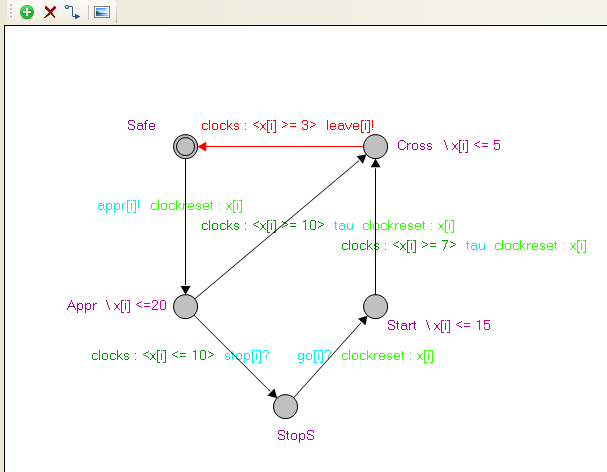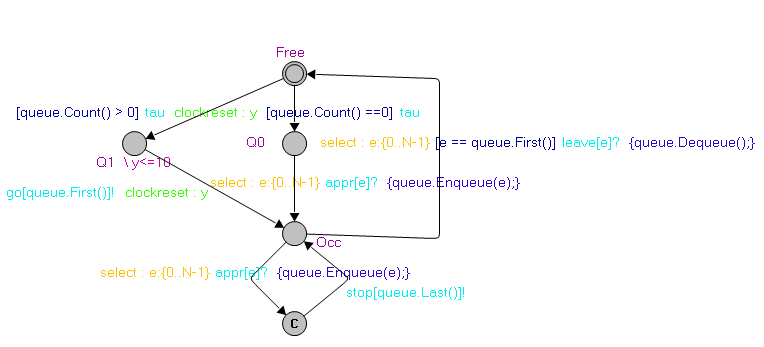 Process
Analysis Toolkit (PAT) 3.5
Help Process
Analysis Toolkit (PAT) 3.5
Help |
In this example, we model a railway
control system to automatically control trains passing a critical point such as
a bridge. The idea is to use a computer to guide trains from several tracks
crossing a single bridge instead of building many bridges. Obviously, a
safety-property of such a system is to avoid the situation where more than one
train are crossing the bridge at the same time. For more details about this example, see
[WangPD94]. The global declaration
part #import "PAT.Lib.Queue"; //number of trains #define N 4; channel appr[N]; channel go[N]; channel leave[N]; channel stop[N]; var<Queue> queue; clock x[N]; clock y; In this example, we import the external
C# library to use the queue functions. Constant N represents the nunber of
trains. We define arrays of channels to represent the status of the N trains.
Clock x[N] is an array which record the clock value of each train during the
execution. The process definition
part Train Process with paramenter i: Gate process: The whole system is defined as
follows: System = ||| z:{0..N-1}@Train(z) |||
Gate; The asserstion
part //Whenever a train approaches the bridge, it
will eventually cross. //overflow: There can never be N elements in
the queue (thus the array will not overflow).
////////////////The
Model////////////////// 

////////////////////////////////////////////////////////////////////////////////////
#assert System
deadlockfree;
#assert System |=
[]("appr[1]" -> <> "leave[1]"); //Notice: channel should be specified
as a string eclosed within a pair of " ".
#define overflow (queue.Count()> N);
#assert
System reaches overflow;
Copyright © 2007-2012 Semantic Engineering Pte. Ltd.